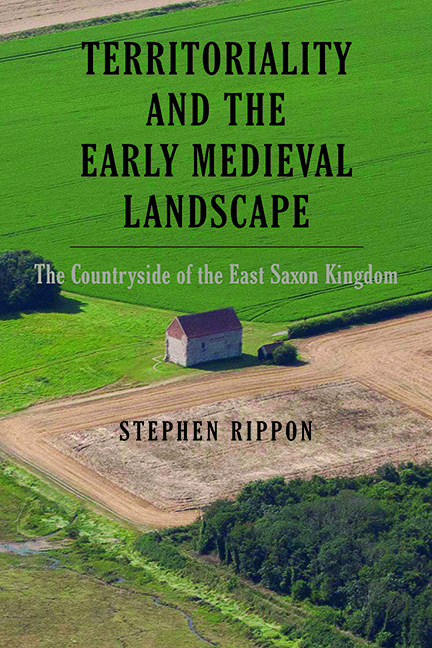Book contents
- Frontmatter
- Dedication
- Contents
- List of Illustrations
- List of tables
- List of Abbreviations
- Acknowledgements
- Glossary
- Preface
- Part I Background
- Part II The Early Folk Territories
- Part III Discussion and Analysis
- Appendix 1 Domesday Population Densities Across the ‘Rochford Peninsula’ Early Folk Territory
- Appendix 2 Sites Used in the Analysis of Animal Bone Assemblages
- Appendix 3 Sites Used in the Analysis of Charred Cereal Assemblages
- Bibliography
- Index
- Garden and Landscape History
Chapter 4 - From Early Folk Territory to Domesday Vills: The Rochford Peninsula
Published online by Cambridge University Press: 26 May 2022
- Frontmatter
- Dedication
- Contents
- List of Illustrations
- List of tables
- List of Abbreviations
- Acknowledgements
- Glossary
- Preface
- Part I Background
- Part II The Early Folk Territories
- Part III Discussion and Analysis
- Appendix 1 Domesday Population Densities Across the ‘Rochford Peninsula’ Early Folk Territory
- Appendix 2 Sites Used in the Analysis of Animal Bone Assemblages
- Appendix 3 Sites Used in the Analysis of Charred Cereal Assemblages
- Bibliography
- Index
- Garden and Landscape History
Summary
THE FIRST EARLY FOLK territory to be explored – the Rochford Peninsula in south-east Essex – will be used to illustrate the sources and methods used in this study. Along with the other Thameside districts (Chapters 5 and 6) there is evidence for very early Anglo- Saxon settlement within a landscape that had seen a contraction of agriculture in the Late Roman period, although some areas may still have been occupied by the native British population. The Rochford Peninsula is surrounded by water on three sides, with the North Sea to the east, the Thames Estuary to the south and the Crouch Estuary to the north. Topographically it can be divided into four zones, with a large area of coastal marshland in the east (including Foulness and Wallasea islands), fertile brickearths and sandy gravels in the central lowlands, the poor soils of the gravel-capped Rayleigh Hills to the west and a further area of coastal marshland in what is now Canvey Island to the south (Figure 4.1).
KEY INFORMATION
Possible folk name: Caningas?
Royal vill(s): Prittlewell
Minster church(s): Great Wakering, and later Prittlewell, Southchurch and possibly Canewdon Possible meeting place: King's Hill, overlooking the ford across the river Roach in Rochford (meeting place of Rochford Hundred)
Great estates (into which it fragmented): ‘greater Prittlewell’, ‘greater Wakering’, ‘greater Southchurch’ and ‘greater Canewdon’
Area: 220km2
Successor hundreds: Rochford
RECONSTRUCTING THE EARLY MEDIEVAL FOLK TERRITORY
With the exception of Rawreth in the far west (see below), all of the parishes within Rochford Hundred were bound together through a series of territorial connections. Some parishes had detached parcels within their neighbours: Little Wakering, for example, had a detached parcel in Barling, while Great Wakering had one between Little Wakering and Barling (Figure 4.2). Most parish boundaries within Rochford Hundred zigzag through the historic landscape, a notable exception being where they follow the possible Roman road between North Shoebury and Great Wakering (Figure 4.2).
This web of territorial connections becomes even more complex when we map the detached parcels on the adjacent coastal marshes of Canvey, Foulness and Wallasea Islands (Figure 4.3). Wallasea was divided between the parishes of Canewdon, Eastwood, Great Stambridge, Little Stambridge, Paglesham and Little Wakering, while Foulness and its nearby islands were divided between Rochford, Shopland, Sutton, Great Wakering, Little Wakering and Little Stambridge.
- Type
- Chapter
- Information
- Territoriality and the Early Medieval LandscapeThe Countryside of the East Saxon Kingdom, pp. 87 - 100Publisher: Boydell & BrewerPrint publication year: 2022



